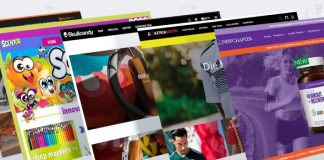The ecommerce industry is always pushing the envelope—what was “advanced” a year ago is now old news. Technology is continually expanding the capabilities available to ecommerce entrepreneurs.
More often than not, online shopping now entails someone using a mobile device to browse or even buy, whereas it typically used to require sitting in front of a desktop computer. Artificial intelligence has entered the picture, enabling retailers to further personalize the shopping experience through accessible customer service and targeted product recommendations. These are just a few examples illustrating how ecommerce as a whole is advancing in leaps and bounds.
It pays to ask: What do millennials want from ecommerce experiences?
Millennials and Ecommerce: A Good Match
Millennials are aware of these changes and helping to spur them on with ever-evolving expectations of what the online shopping journey can and should be. This generation—which spans current college students through thirty-somethings— is “digitally native,” meaning members “tend to be the earliest adopters of the latest media and digital shopping tools.”
An overwhelming number of millennials have made an online purchase within the last year. This age group tends to be comfortable shopping online only—but also using ecommerce websites as part of an omni-channel experience. It’s clear that ecommerce entrepreneurs serious about securing the loyalty of this large demographic of online shoppers must pay attention to what millennials want out of their purchasing journey.
The Frictionless Ecommerce Journey
Adweek reports 42 percent of millennials “would engage in more online transactions if there weren’t so many security hurdles.” This statistic indicates an aversion to friction among younger shoppers—that is, anything that makes it more difficult for online shoppers to complete a transaction.
Simply put, friction hinders people from accomplishing their goals while shopping online. Being presented with enough of it can cause people to exit your website altogether, perhaps even abandoning the shopping cart filled with items they’d intended to buy. This translates to lost revenue opportunities, not to mention lingering customer dissatisfaction and decreased loyalty.
Millennials want a frictionless ecommerce experience. What does this mean for retailers? Here are the qualities of an effective, optimized enterprise e-commerce website according to digital entrepreneur and marketing expert Neil Patel:
- Functional: Visitors to your website should be able to accomplish their desired actions without glitches or malfunctions.
- Accessible: Reduce barriers to entry and clean up your site’s SEO strategy.
- Usable: Users must be able to navigate your website freely and use menus to find what they’re seeking.
- Intuitive: Your sales funnel should flow in logical progression from general to more specific.
- Persuasive: Your online store should deliver a great user experience and encourage visitors to interact in a meaningful way.
In other words, the structure and design of your website goes a long way toward influencing the overall experience customers encounter, which in turn affects conversion rates and the likelihood of earning repeat business.
Streamlining the Checkout Process
The checkout process is fraught with many potential friction points. As Ecommerce Magazine writes, “If customers are forced to fill in too many fields, move through too many pages, and perform too many actions, they will lose patience and leave.”
It pays to streamline the checkout process, minimizing the amount of effort shoppers have to put in to complete a transaction. For example, providing the opportunity to check out quickly as a guest will help people in a hurry convert. You can then offer the opportunity to create an account for future convenience after you’ve secured the sale.
The challenge is balancing necessary functions—like stringent cybersecurity—with the increasing need for convenience. Millennial shoppers want frictionless ecommerce experiences, but not at the expense of safety and accuracy.
































